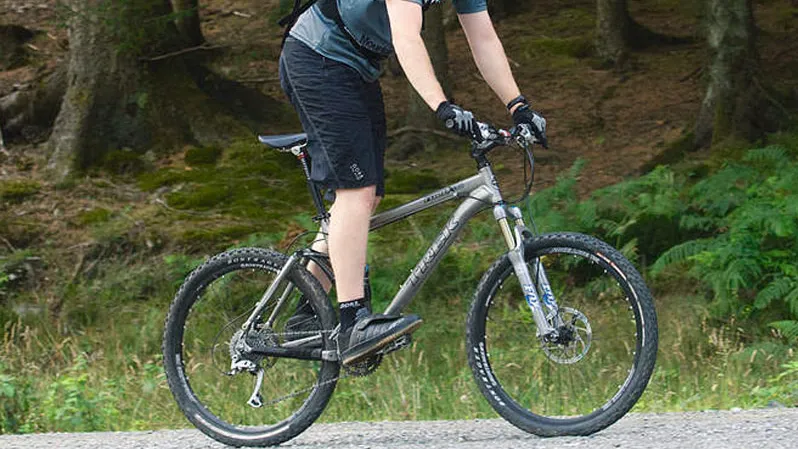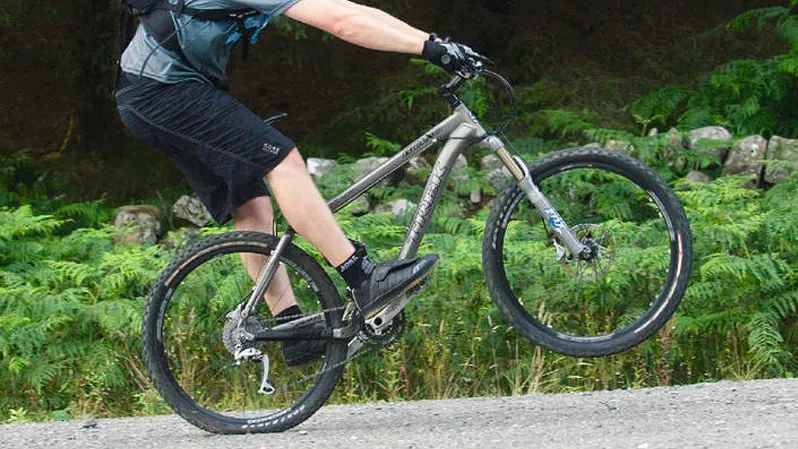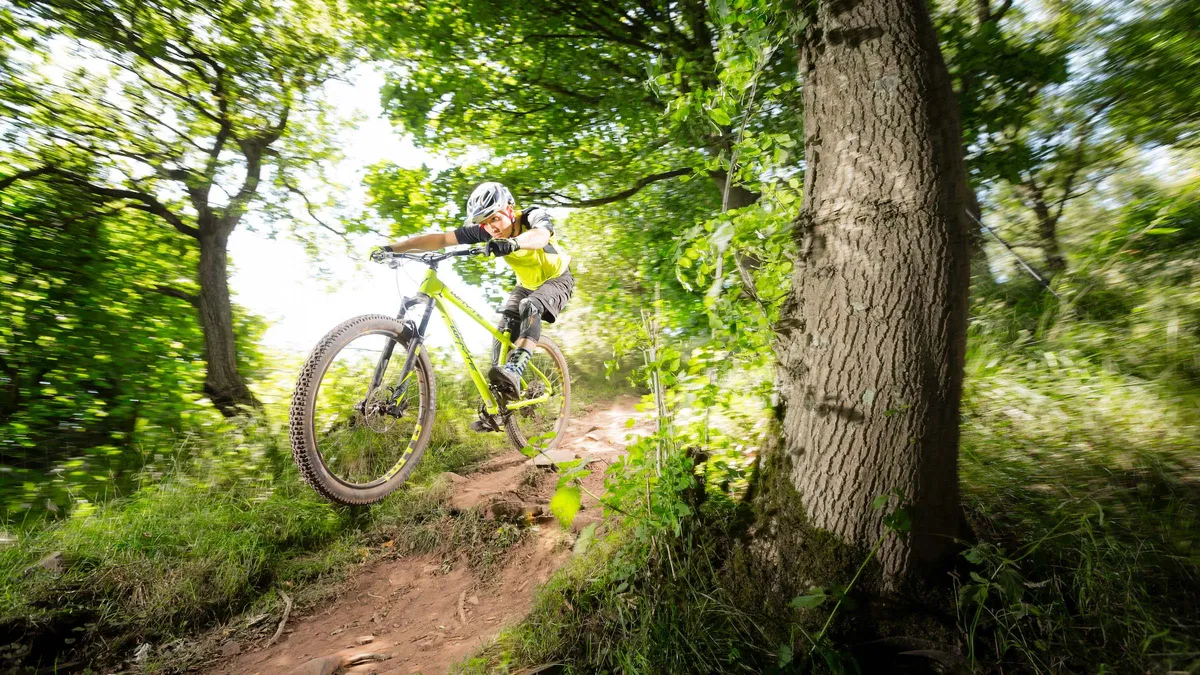BikeRadar has already showed you how to wheelie, and a natural progression from that skill is to learn how to manual. A manual, like a wheelie, is a trick that involves keeping the front wheel elevated while your rear wheel tracks the ground. Let downhill racing legend Steve Peat and dirt jumper Blake Samson explain how it's done.
The difference between the two comes in the way you pop and maintain the height of your front wheel. A wheelie involves pedalling to keep the front wheel up, whereas a manual is both initiated and maintained by shifting your bodyweight – no pedalling involved.
Manuals can be used in a variety of riding scenarios, whether to keep the pace up at a pump track or to prevent the front wheel from tracking deep ruts on the trails. This'll help you keep your speed up.
- Lean how to wheelie, with Anna Glowinski
- How to build mountain bike dirt jumps
- Send it sideways: how to master the whip
1. Approach at a comfortable speed

When you're learning, start off slow, and don't try to keep the manual up for too long. Just focus on getting your balance right.
2. Pull on the handlebars, move your body weight back
Aim to get your centre of gravity over the bike's bottom bracket.
3. Cover the rear brake

If you find you're going too far backwards, feather the brake to bring you back in line. Don't jam it on hard.
4. Use your hips to balance
When you start to drift to the left or right, counterbalance by moving your hips in the opposite direction. When you're in the right balance point, you'll feel it.
Watch our guide and we'll show you how to manual
Top tips
Always cover your back brake in case you feel the bike wanting to loop out backwards — gently dabbing the rear brake will bring the front of the bike down again. This manoeuvre should see you effortlessly bringing the front wheel up and off the floor; brute force and grunting tend to indicate poor technique. Remember, if it feels forced and ugly, then you’re doing something wrong.
Set-up tips
How you can make learning manuals easier:
- Flat pedals and good flat-pedal shoes inspire more confidence. Make sure you set your feet further forward on the pedal than normal to get the most traction from the pedal.
- Slightly lowered saddle heights make life easier. Bear in mind, though, that you’ll ultimately need to be able to do this at the drop of a hat on climbs as well as descents.
- A combination of disc/V brakes with good modulation and feel, plus true wheels, is essential for consistent (non-grabby) braking. Make sure your levers are properly set for two-finger braking. If you have small hands, adjust the levers to their shortest reach.
- Riser bars and shortish stems (70mm or shorter) paired with relatively high front ends are easier to pop up into a manual, because the distribution of your body weight is already biased more towards the back of the bike.
- Any bike with short chainstays (tucking the back wheel tightly under the rider) will be easier to manual. Jump hardtails and similar bikes tend to be best, while full-suspension bikes make life a little harder.

